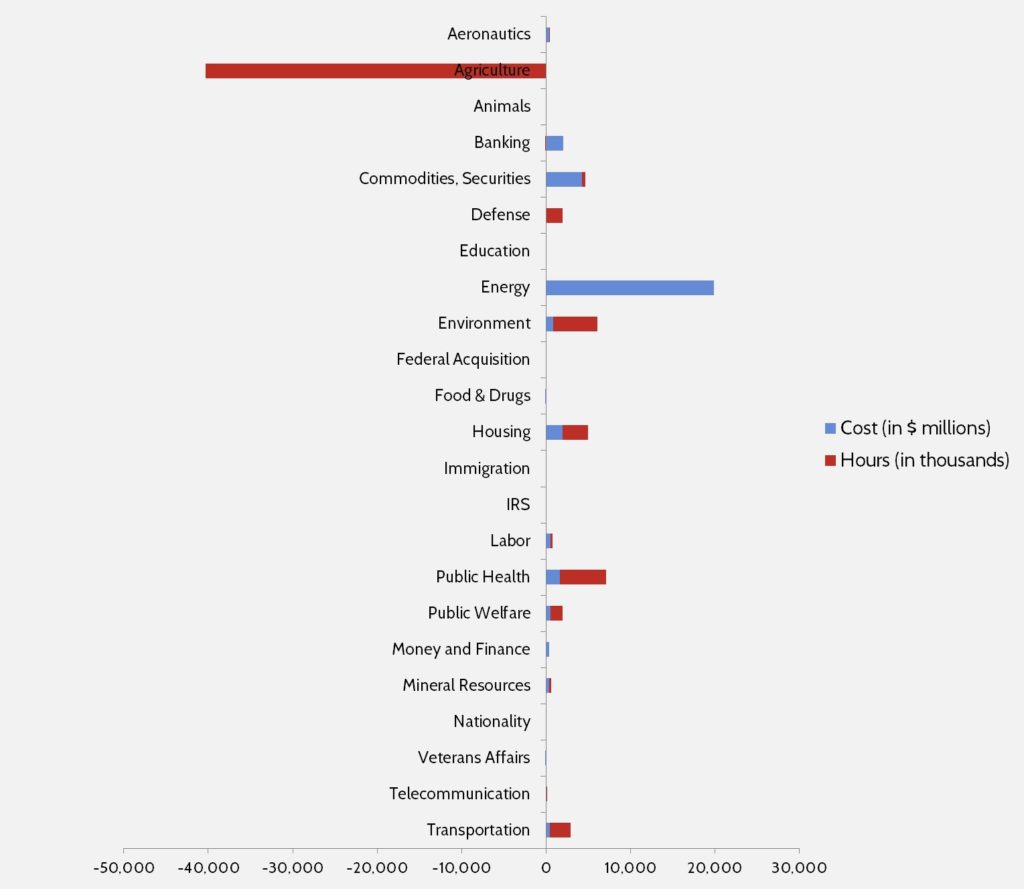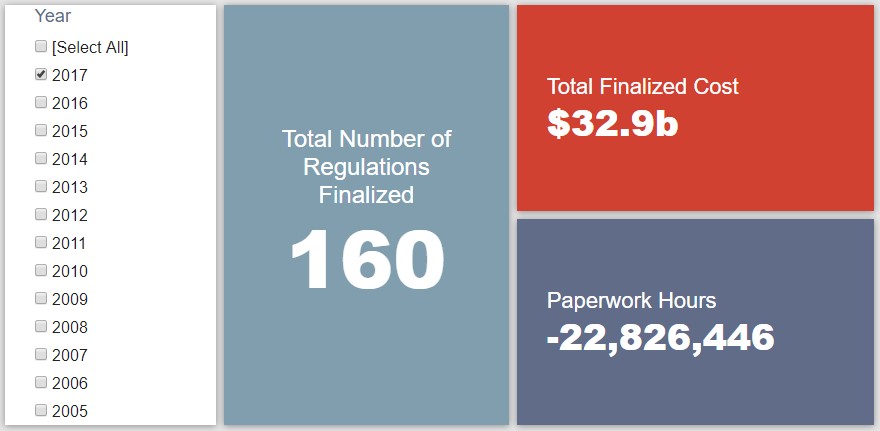Week in Regulation
August 28, 2017
Regulations Go On Vacation
In the penultimate week of the August Recess, regulatory agencies were as quiet as the rest of Washington, DC. Total regulatory costs rose by $5.5 million against no monetized benefits. Agencies also put forward a whopping 165 new hours of paperwork. The per capita regulatory burden for 2017 is $459.
Regulatory Toplines
- New Proposed Rules: 40
- New Final Rules: 50
- 2017 Total Pages of Regulation: 40,590
- 2017 Final Rules: $32.9 Billion
- 2017 Proposed Rules: $114 Billion
The American Action Forum (AAF) has catalogued regulations according to their codification in the Code of Federal Regulations (CFR). The CFR is organized into 50 titles, with each title corresponding to an industry or part of government. This snapshot of final rules (a change from earlier versions) will help to determine which sectors of the economy receive the highest number of regulatory actions.
Tracking Regulatory Modernization
The most notable action of the week was a deregulatory action from the Environmental Protection Agency (EPA) regarding the “Manufacture of Amino/Phenolic Resins.” The proposal, instigated by petitions from interested parties, would reduce total capital costs to the industry by $4.8 million, or half of the compliance costs imposed by a 2015 rule. Since it is still a proposed rule and EPA did not discuss its place under Executive Order (EO) 13,771, it does not affect EPA’s current tally of EO 13,771 actions.
On regulatory budget implementation, below are the agencies that have accrued annual savings or new costs under the president’s one-in, two-out budget; proposed rules are not included:
- Defense: -$400 million
- Interior: -$360.37 million
- Education: -$100 million
- Labor: -$78 million
- Veterans Affairs: -$1.9 million
- HHS: $23.91 million
- EPA: $60 million
- Energy: $34 million
Many of these figures are the result of CRA resolutions of disapproval. Given their historic regulatory output, AAF can predict that Defense, Interior, and Education will likely meet the goal of $0 in net regulatory costs by the end of this fiscal year.
Affordable Care Act
Since passage, based on total lifetime costs of the regulations, the Affordable Care Act has imposed costs of $53 billion in final state and private-sector burdens and 176.9 million annual paperwork hours.
Dodd-Frank
Click here to view the total estimated revised costs from Dodd-Frank; since passage, the legislation has produced more than 74.8 million final paperwork burden hours and imposed $38.9 billion in direct compliance costs.
Total Burdens
Since January 1, the federal government has published $146.9 billion in compliance costs ($32.9 billion in final rules) and has cut 17.3 million paperwork burden hours (due to 22.8 million in reductions from final rules). Click below for the latest Reg Rodeo findings.












